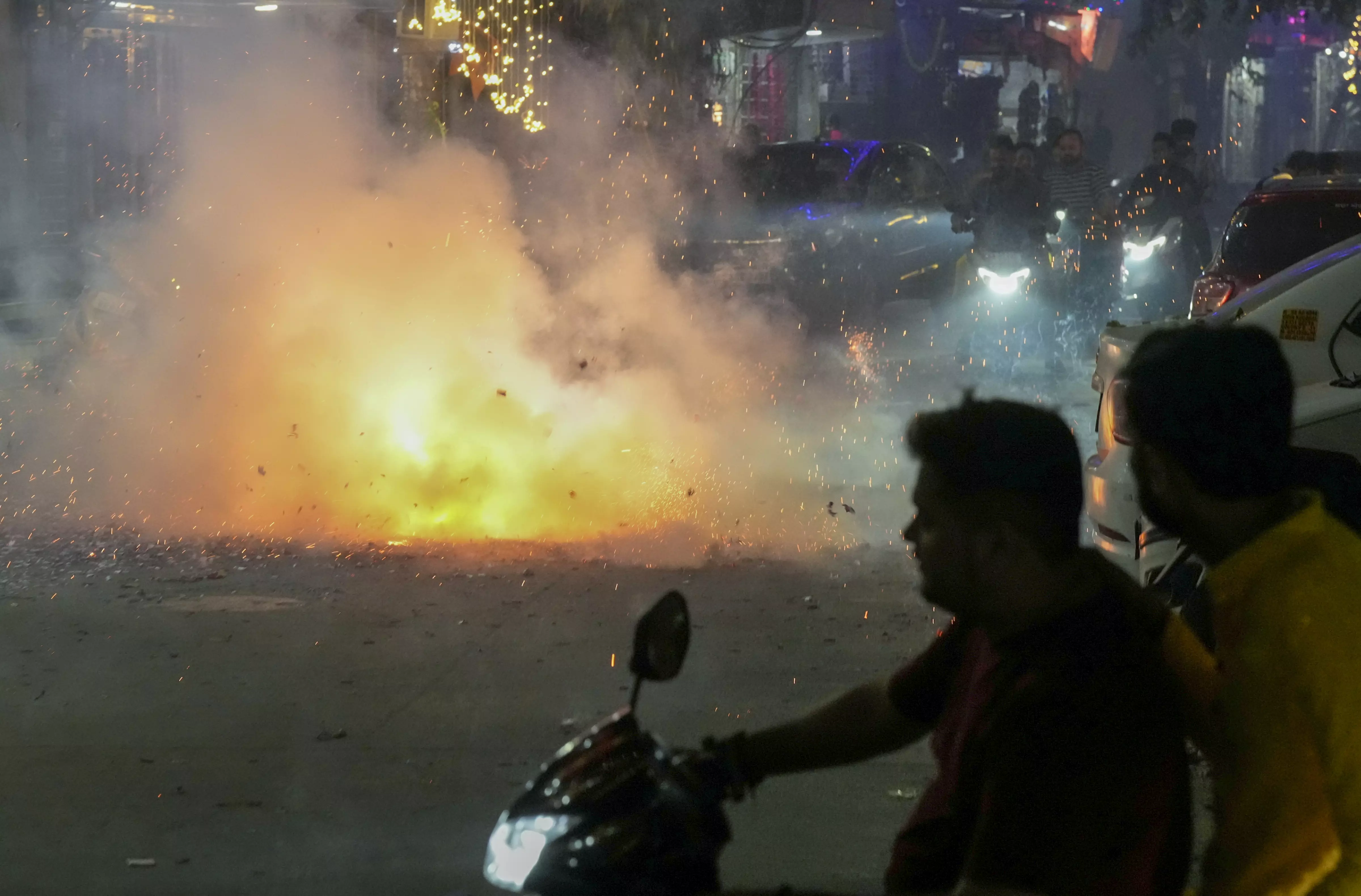
Delhi becomes world's most polluted city as residents cock a snook at firecracker ban
The AQI level in most of the 40 monitoring stations in the city remained in the “very poor” category with Anand Vihar and RK Puram reporting the worst air quality index of 395

A day after people flouted ban on firecrackers during Diwali celebrations, New Delhi’s air quality dropped to hazardous levels and it was ranked the world’s most polluted city on Friday (November 1) morning, according to Swiss firm IQAir.
A large section of city residents celebrated Diwali with fireworks despite a ban on firecrackers, adding to the thick smog that covered the city. The air quality index reached 388 at Anand Vihar station at 10 am, which is categorised as “very poor”, according to National Air Quality Index or AQI by the Central Pollution Control Board. As per IQAir, this has put Delhi at the top of the world’s real-time pollution rankings. IQAir said the pollutant levels topped 345 micrograms per cubic metre and rated Delhi as the worst in the world.
Alarming AQI level
The AQI level in most of the 40 monitoring stations in the city remained in the “very poor” category with Anand Vihar and RK Puram reporting the worst air quality index of 395.
Also read: Delhi: Thick layer of smog envelops city as air quality drops to 'very poor'
Burari Crossing (394), Sonia Vihar (392), Punjabi Bagh (391), North Campus (390), Bawana (388), Jahangirpuri (387), Rohini (385), Ashok Vihar (384), and Nehru Nagar (381) were some other places with the “very poor” air quality.
The Indian Institute of Tropical Meteorology (IITM), Pune, has said that the air quality in the national capital is likely to be in the “very poor” category (AQI 300 to 400) on Friday.
An AQI between 0 and 50 is considered good, 51 and 100 satisfactory, 101 and 200 moderate, 201 and 300 poor, 301 and 400 very poor, 401 and 450 severe, and above 450 severe-plus.
Levels of fine particulate matter -- dangerous micro-particles known as PM2.5 pollutants that enter the bloodstream through the lungs -- increased to more than 23 times the World Health Organisation (WHO) recommended daily maximum, said an NDTV report.
Failure to enforce ban?
Interestingly, Delhi recorded its best air quality on Diwali day in eight years in 2023, with the average AQI at 218. The festival of lights was celebrated on November 12 last year.
However, this year presented a picture in stark contrast despite the fact that Delhi Environment Minister Gopal Rai announced on Diwali eve that 377 teams were formed to enforce the ban on firecrackers across the capital. A senior Delhi police officer also said all deputy commissioners of police (DCPs) were asked to form dedicated teams to ensure that firecrackers do not burst in their respective districts.
Also read: Delhi: 99 teams formed to enforce dust control measures, says Atishi
The relentless bursting of firecrackers caused severe noise pollution and enveloped the national capital in dense smoke with residents flouting the restrictions till late at night.
Farm fires add to woes
Stubble burning or farm fires in neighbouring Haryana and Punjab, particularly in the aftermath of harvest season in October and November, are also often blamed for the rise in pollution levels in Delhi.
The capital has been breathing hazardous air quality for the past few weeks, prompting authorities to impose stage two of the GRAP or the Graded Response Action Plan last week.
Mumbai too among top 10
Notably, the pollution levels were also alarming in cities like Mumbai and Chennai which also experienced smog and poor air quality.
Also read: Delhi-NCR in Nov-Dec recorded worst period of air quality, smog in 6 yrs: Report
Mumbai was the only other city apart from Delhi that featured among the top 10 most polluted cities in the world in the IQAir world major city quality ranking. Among other cities in the list were Lahore, Karachi, Dhaka, Kathmandu, Dubai, Beijing, Baghdad and Wuhan.

